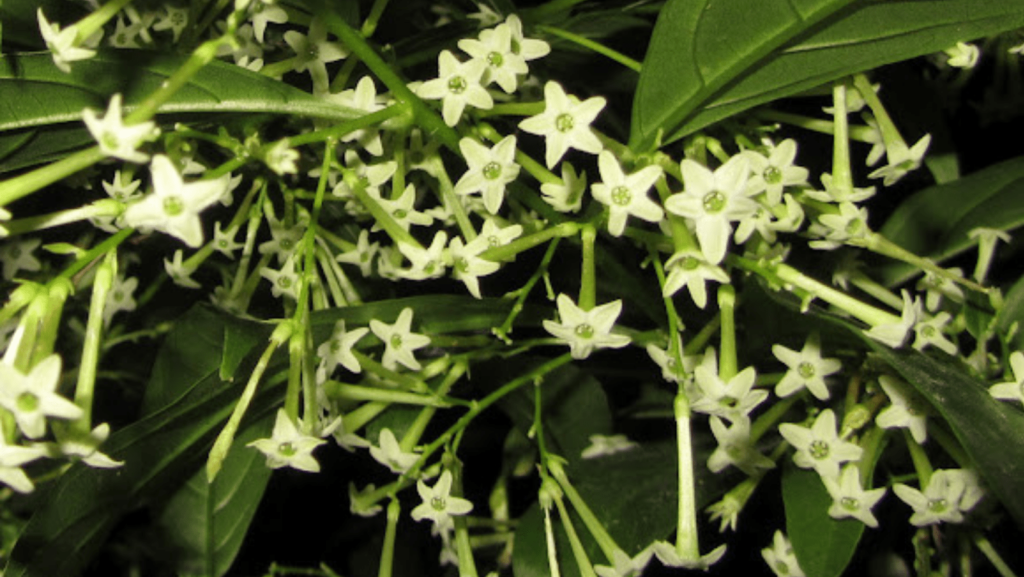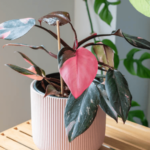Last updated on January 7th, 2025 at 04:51 am
Night blooming jasmine, also known as “Queen of the Night” or “Cestrum nocturnum,” is a captivating plant renowned for its intoxicating fragrance that fills the night air. While most people are familiar with its common variety, there are actually several types of night blooming jasmines that offer a range of characteristics and scents.
Night blooming jasmine’s allure lies in its fragrant blooms that open only during the night. As dusk falls, its flowers come alive, releasing a powerful and sweet aroma that can fill an entire garden. This makes it ideal for those looking to add a bit of magic to their evening spaces. It’s not just its scent that makes it special, though its nocturnal blooming habit sets it apart from many other flowering plants.
Types of Night Blooming Jasmine
There are several varieties of night-blooming jasmine, each with distinct characteristics.
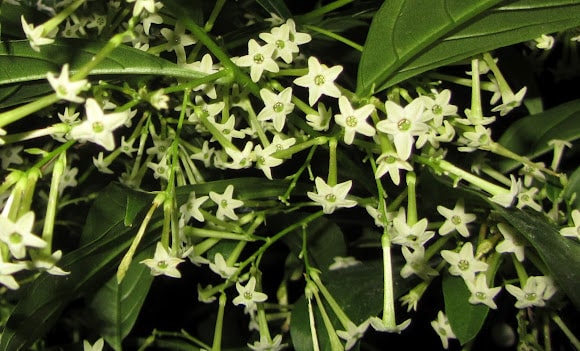
Cestrum Nocturnum (Common Night Blooming Jasmine)
This is the most well-known type of night-blooming jasmine. It produces clusters of small, tubular white or pale green flowers that open at dusk. Its fragrance is potent and can be sensed from a considerable distance.

Cestrum Diurnum (Day Blooming Jasmine)
Though not a true night-bloomer, Cestrum Diurnum deserves a mention because of its close relation to the night-blooming varieties. As its name suggests, this jasmine blooms during the day and has a light, pleasant fragrance.
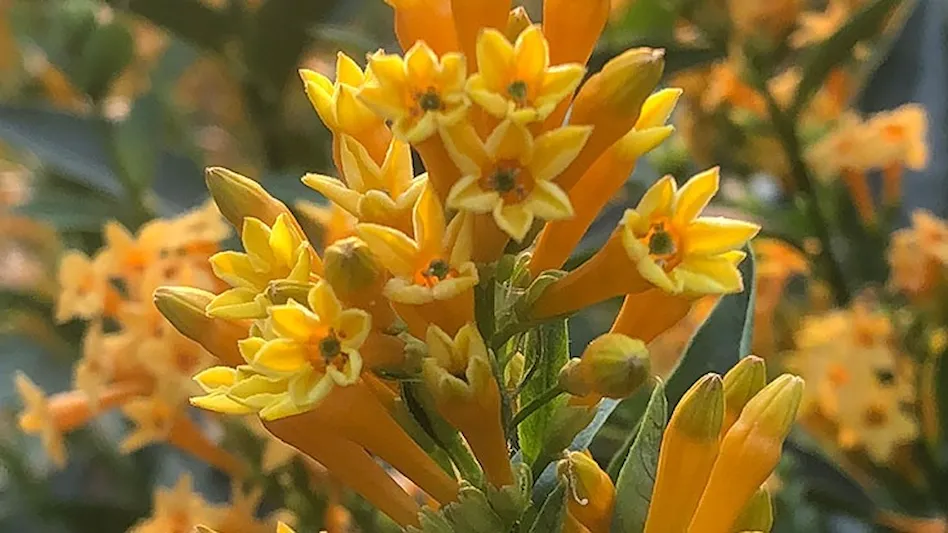
Cestrum Aurantiacum (Orange Jessamine)
Orange Jessamine, or Cestrum Aurantiacum, stands out with its orange-yellow blooms. While not as strong in fragrance as Cestrum Nocturnum, its bright flowers provide a beautiful contrast to typical night-blooming varieties.
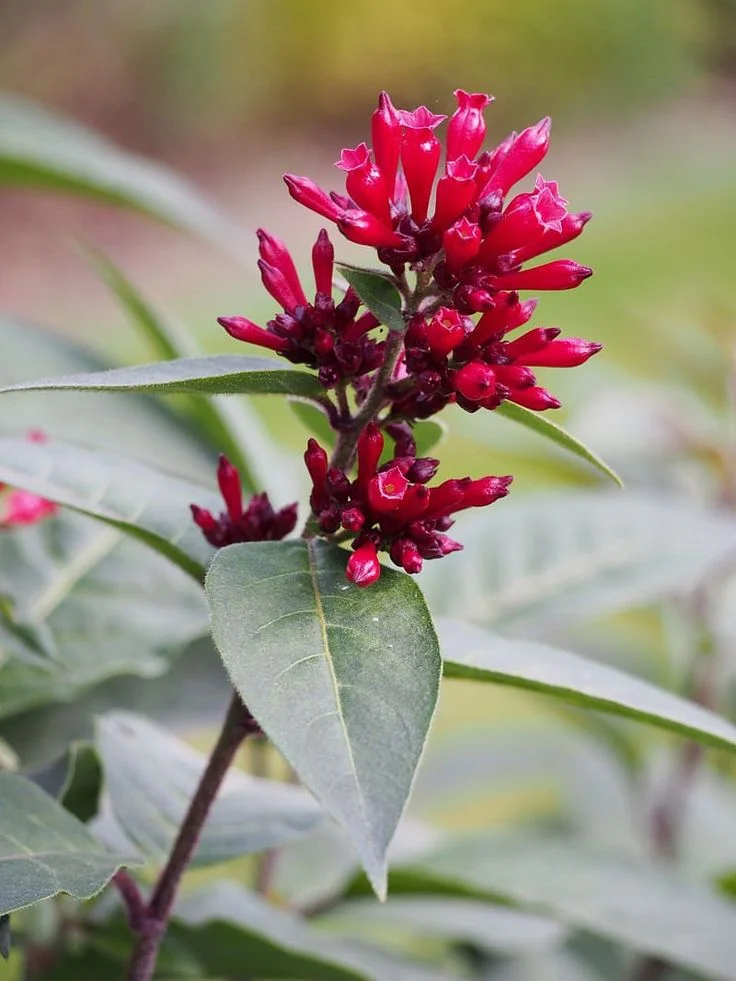
Cestrum Elegans (Red Cestrum)
Cestrum Elegans is noted for its red or pink tubular flowers. This variety tends to bloom throughout the day and night, making it an excellent choice for gardeners wanting a continuous display of color.
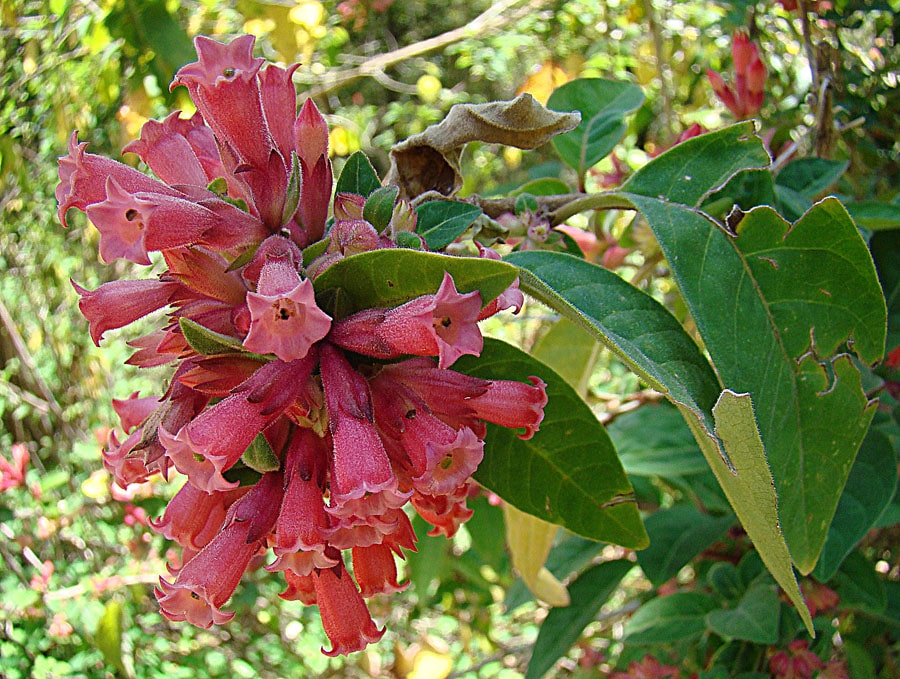
Cestrum Fasciculatum (Early Jasmine)
A less common variety, Cestrum Fasciculatum is known for its dense, early-blooming clusters of flowers. Its light fragrance can be enjoyed during twilight hours, offering a subtler alternative to stronger night-blooming jasmines.
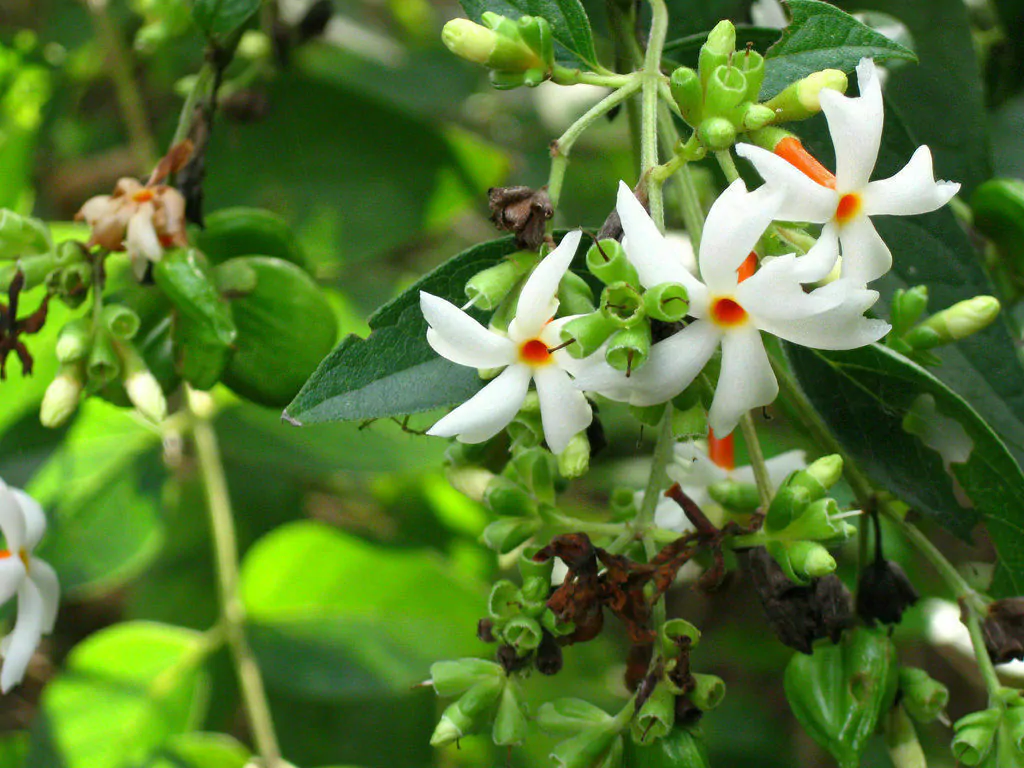
Nyctanthes Arbor-Tristis (Parijat)
This jasmine is unique for its spiritual and cultural significance in India, where it is considered sacred. Its white flowers with orange centers bloom at night and fall by morning, giving the plant the name “Tree of Sorrow.”
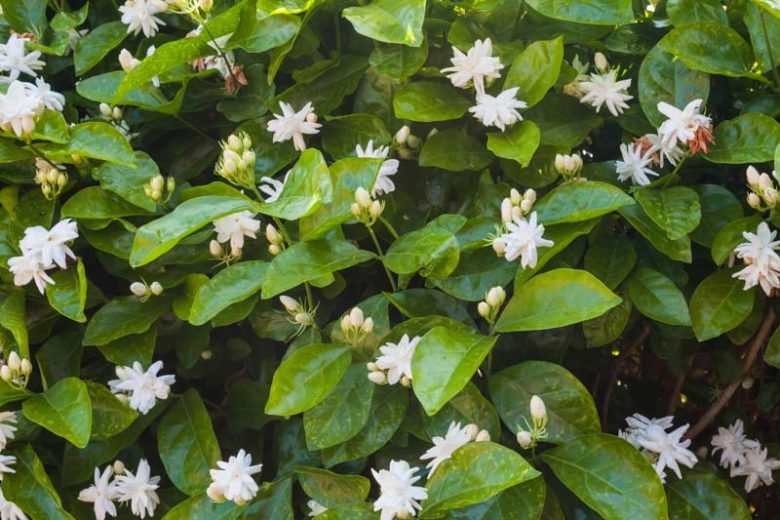
Jasminum Sambac (Arabian Jasmine)
Though not strictly a night-blooming jasmine, Jasminum Sambac deserves mention due to its strong fragrance, which can linger throughout the night. It’s commonly used in perfumes and teas in Asia.
FAQS
Does night blooming jasmine grow in Florida?
Yes, night-blooming jasmine (Cestrum nocturnum) can grow in Florida. It’s a tropical plant that thrives in warm, humid climates. Florida’s climate is ideal for its growth, especially in the southern regions.
However, it’s important to note that while it can tolerate cooler temperatures, it may not bloom as profusely or may experience some dieback during harsh winters, particularly in the northern parts of Florida.
Does night blooming jasmine attract snakes?
No, night-blooming jasmine (Cestrum nocturnum) does not attract snakes. There is no scientific evidence to support this claim. The belief that this plant attracts snakes is likely a myth or superstition.
Snakes are primarily attracted to areas with abundant food sources, like rodents and insects. While night-blooming jasmine may attract pollinators like moths, these insects are not typically the primary prey for snakes.
Can night blooming jasmine grow in a pot?
Night-blooming jasmine is a popular choice for potted gardens due to its fragrant flowers and ability to thrive in containers. To ensure healthy growth, select a well-draining potting mix and a pot that is large enough to accommodate the plant’s root system. Place the plant in a location that receives at least six hours of direct sunlight per day. Water regularly, but avoid overwatering, and fertilize during the growing season.
Does night blooming jasmine smell good?
Yes, night-blooming jasmine has a strong, sweet, and intoxicating fragrance. This is especially noticeable at night, as the name suggests. Many people find the scent to be quite pleasant and relaxing. However, it’s important to note that some people might find the fragrance to be too overpowering or even unpleasant.
is night blooming jasmine poisonous to cats?
Night-blooming jasmine is not generally considered poisonous to cats. However, it’s always a good idea to exercise caution and consult with a veterinarian if you have any concerns. Some cats might experience mild gastrointestinal upset if they ingest large amounts of the plant.
If you have a cat and want to plant night-blooming jasmine, consider growing it in a location that is inaccessible to your pet. This will help prevent accidental ingestion.
is night blooming jasmine poisonous to dogs?
Night-blooming jasmine is not generally considered poisonous to dogs. However, as with any plant, it’s best to err on the side of caution. If your dog ingests a significant amount of the plant, they might experience mild gastrointestinal upset.
is jasmine toxic to pets?
Jasmine is generally not considered toxic to pets. However, it’s important to note that some jasmine varieties might have mild toxic effects if ingested in large quantities.
If you have a pet and want to plant jasmine, it’s a good idea to choose a variety that is known to be safe for animals. Additionally, consider growing the jasmine in a location that is inaccessible to your pet to prevent accidental ingestion.
what does night blooming jasmine smell like?
Night-blooming jasmine has a strong, sweet, and intoxicating fragrance. The scent is often described as being similar to that of gardenia or honeysuckle. It’s most noticeable at night, as the name suggests, but it can also be fragrant during the day. Many people find the scent to be quite pleasant and relaxing, while others might find it to be too overpowering.
what are the disadvantages of night-blooming jasmine?
Night-blooming jasmine, while beautiful and fragrant, has a few potential disadvantages:
- Overpowering Fragrance: While many people find the fragrance of night-blooming jasmine to be delightful, others may find it too strong or even unpleasant.
- Limited Bloom Time: The flowers of night-blooming jasmine typically bloom only at night and for a short period of time. During the day, the plant may appear less attractive.
- Invasive Potential: In some regions, night-blooming jasmine can be considered invasive as it can spread rapidly and outcompete native plants.
- Thorny Stems: Some varieties of night-blooming jasmine have thorny stems, which can be a safety concern, especially for children or pets.
Are night blooming jasmine roots invasive?
Night-blooming jasmine roots are not typically considered invasive. Unlike some other plants, they do not tend to spread aggressively or damage underground structures. However, it’s important to note that the invasiveness of a plant can vary depending on local conditions and the specific variety.
important notice: All credit of images goes to the owner of the images, You can mail us freely for credit and removal. Thank you.

